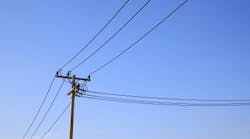OSHA to Update Standards Covering Electric-Power Generation and Distribution
The last time OSHA issued regulations for the construction of transmission and distribution installations, gasoline was 55 cents a gallon and “Deep Throat” was the talk of Washington and Hollywood.
Earlier this week, the agency announced that it plans to update the construction and general-industry standards for workers performing electric-power generation, transmission and distribution work. OSHA issued the standards in 1972.
"This long-overdue update will save nearly 20 lives and prevent 118 serious injuries annually," OSHA Administrator Dr. David Michaels said. "Electric utilities, electrical contractors and labor organizations have persistently championed these much-needed measures to better protect the men and women who work on or near electrical power lines."
OSHA said it is revising the construction standard for electric-power line work to make it more consistent with the corresponding general-industry standard and is making some revisions to the construction and general-industry requirements.
The updated standards for general industry and construction include new or revised provisions for host and contract employers to share safety-related information with each other and with employees, as well as for improved fall protection for employees working from aerial lifts and on overhead line structures, the agency explained.
In addition, the standards adopt revised approach-distance requirements to better ensure that unprotected workers do not get dangerously close to energized lines and equipment. The final rule also adds new requirements to protect workers from electric arcs, according to OSHA.
The final rule will include revised standards for electrical protective equipment in general industry and construction.
“The new standard for electrical protective equipment applies to all construction work and replaces the existing construction standard, which was based on out-of-date information, with a set of performance-oriented requirements consistent with the latest revisions of the relevant consensus standards,” OSHA said.
The new standards address the safe use and care of electrical protective equipment, including new requirements that equipment made of materials other than rubber provide adequate protection from electrical hazards.
OSHA estimates that the final rule will result in “monetized benefits” of $179 million annually, with net benefits equal to about $130 million annually.
The final rule becomes effective 90 days after publication in the Federal Register. OSHA noted that it adopted delayed compliance deadlines for certain requirements.
